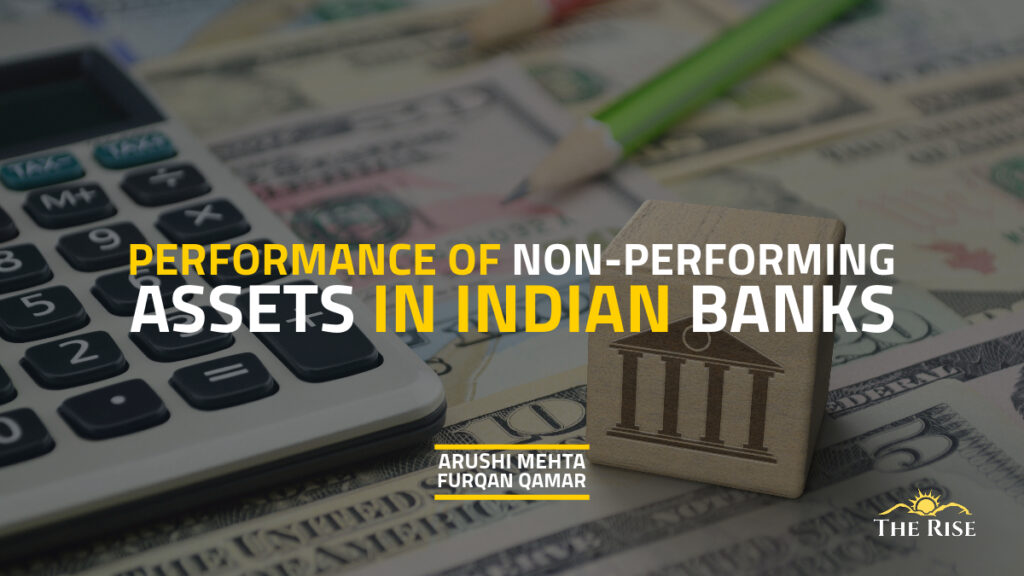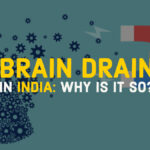While not taking away the credit due to banks for their efforts in the direction of better recovery performance and reduction in NPAs, pick up in the economy and business sentiments, the revival of demand, and increased business and income levels of borrowers have undoubtedly contributed to the improved performance of banks.
There is a strong perception in some quarters that after classifying any loan account as a Non-Performing Asset (NPA), the banks put the same on the back burner and do not make much effort to recover dues, rather put their energy and time into their other business focus points, such as growth in deposits, advances and recovery of current dues. There is also a belief that write-offs are an easy way for banks to get rid of bad loans from their books. This is considered favoritism and connivance on the part of bank officials. At times political interference is also alleged, particularly in cases of write-offs of large borrowers by Public Sector Banks (PSBs). Incidentally, the share of large borrowers in gross advances was 46.4% and in Gross NPAs (GNPA) was 53.90% in March 2023 (RBI, 2023). Thus, their share in GNPAs was somewhat disproportionate to their share in gross advances. On one hand, the GNPA ratio of large borrowers for Scheduled Commercial Banks (SCBs) was 4.5% in March 2023 which was higher as compared to the overall GNPA ratio of 3.9% (RBI, 2023). On the other hand, banks contend that even after making provisions and writing-offs, there is no letup in their efforts for recovery of dues, and they devote full attention to the same. Such recoveries also allow the banks to increase their profits by way of plowing back provisions made and write-off amounts which, however, also increase their tax burden as a consequence. As per the 27th Financial Stability Report (June 2023) of the Reserve Bank of India (RBI), the GNPA ratio declined to 3.9% in March 2023, which is a ten-year low. Similarly, the NNPA ratio at 1.00% was also at a level last observed in June 2011 (RBI, 2023).
One of the measures to check the veracity of claims of banks that they pay required attention to the recovery of their dues is to examine the changes in GNPAs of banks via vis growth in their advances. As per RBI’s data, advances of SCBs stood at Rs. 8745997.49 crores as on 31st March 2018, which increased to Rs. 9676182.55 crores, Rs. 10301896.87 crores, Rs. 10806381.30 crores, and Rs. 12208008.56 crores on 31st March 2019, 31st March 2020, 31st March 2021 and 31st March 2022 respectively, thereby registering a growth of 10.64%, 6.97%, 4.90% and 12.97% respectively. Lower growth during FY20 and FY21 could be attributed to the then-prevalent pandemic (RBI, 2022b).
As per the compilation done from the RBI’s Report on Trend and Progress of Banking in India of relevant years, the GNPAs of Priority and Non-priority sectors combined which stood at Rs. 961728 crores as on 31st March 2018 came down to Rs. 880186 crores, Rs. 840305 crores, Rs. 780085 crores and Rs. 697543 crores as on 31st March 2019, 31st March 2020, 31st March 2021 and 31st March 2022 respectively. In percentage terms, the decrease comes to 8.48%, 4.53%, 7.17%, and 10.58% respectively. The comparatively lesser reduction during FY20 and FY21 could also be attributed to the then-prevalent pandemic (RBI, 2022a, RBI, 2021, RBI, 2020, RBI, 2019).
GNPAs of SCBs show a declining trend which, together with the growth in advances, is surely a positive sign and strengthens the case of banks that there is no letup in their efforts in recovering dues.
The NPAs of SCBs under Priority Sector (PS) were Rs. 207120 crores, Rs. 244033 crores, Rs. 275499 crores, Rs. 315192 crores, and Rs. 300537 crores as on 31st March 2018, 31st March 2019, 31st March 2020, 31st March 2021 and 31st March 2022 respectively. Thus, there has been an increasing trend except for FY22. On the contrary, NPAs under Non-Priority Sector (NPS) show a decreasing trend with the amount of NPAs being Rs. 754608 crores, Rs. 636154 crores, Rs. 564806 crores, Rs. 464893 crores and Rs. 397006 crores as on 31st March 2018, 31st March 2019, 31st March 2020, 31st March 2021 and 31st March 2022 respectively. The share of NPS was quite sizeable at 78.46% as on 31st March 2018 which gradually came down to 56.91% as on 31st March 2022 (RBI, 2022a, RBI, 2021, RBI, 2020, RBI, 2019).
It is also worthwhile to see the trend of GNPAs as a percentage to advances during the same time period, which stood at 11.2%, 9.1%, 8.2%, 7.3%, and 5.8% respectively as on 31st March 2018, 31st March 2019, 31st March 2020, 31st March 2021 and 31st March 2022 respectively. Thus, it is in line with the trend of increasing advances and reducing GNPAs (RBI, 2022a, RBI, 2021, RBI, 2020, RBI, 2019).
During the 5-year period from 1st April 2017 to 31st March 2022, there has been an addition of Rs. 1873800.45 crores in the GNPAs of SCBs whereas there has been a reduction of Rs. 772300.48 crores in GNPAs. During the same period SCBs have written off NPAs worth Rs. 1022736.42 crores, constituting 54.58% of the new additions, thereby meaning that recovery of NPAs through bank staff and various other channels viz., Lok Adalats, Debt Recovery Tribunals (DRTs), Securitisation and Reconstruction of Financial Assets and Enforcement of Security Interest Act (SARFAESI Act) and Insolvency and Bankruptcy Code (IBC) is much less than the number of write-offs (RBI, 2022b).
During the aforesaid period, Public Sector Banks (PSBs), as a group, have added Rs. 1256053.72 crores to their NPAs. However, there is a trend of a gradual reduction in the number of new NPAs being added, with lesser amounts being added in FY19, FY21, and FY22 as compared to their previous year. Similarly, PSBs reduced their NPAs during this period by Rs. 479487.58 crores. However, year-wise comparison shows a mixed trend with the amount being more than the previous year in FY19 and FY22 and being less in FY20 and FY21, which could be attributed to the pandemic years. During the same period, PSBs had written off loans amounting to Rs. 744635.19 crores, which, although significantly less than the new NPAs added, was considerably more than the reduction in the amount of NPAs through recovery. The amount written off during FY19 was considerably more than FY18 but subsequently reduced during FY20, FY21, and FY22 over the previous year (RBI, 2022b).
Private Banks (PVBs) added Rs. 557663.99 crores to their NPAs during the aforesaid period. However, a mixed trend was observed with additions during FY20 and FY22 more than the previous year and less during FY19 and FY21. These banks reduced their NPAs by Rs. 262940.24 crores during this period. The amount reduced showed an increasing trend over the previous year except FY21, which could be the impact of the pandemic year. During this period PVBs wrote off Rs. 254989.96 crores with an increasing trend except for FY22 (RBI, 2022b).
During the period of 5 years ended on 31st March 2022, SCBs recovered NPAs to the tune of Rs. 485454 crores through various channels viz., Lok Adalat, DRTs, SARFAESI Act, and IBC. The amount so recovered was Rs. 40352 crores, Rs. 118647 crores, Rs. 172565 crores, Rs. 64229 crores and Rs. 89661 crores during FY18, FY19, FY20, FY21 and FY22 respectively. Thus, there has been a sizeable increase over the previous year except for FY21, which could be the result of the then-prevalent pandemic (RBI, 2022b). Such recovery was 31.45%, 68.30%, 110.71% (could be due to the larger recovery of fully written-off accounts), 54.11%, and 45.80% of the total reduction amount during FY18, FY19, FY20, FY21, and FY22 respectively. Thus, a sizeable amount has been recovered through different channels, often more than the amount recovered by bank staff.
While not taking away the credit due to banks for their efforts in the direction of better recovery performance and reduction in NPAs, pick up in the economy and business sentiments, the revival of demand, and increased business and income levels of borrowers have undoubtedly contributed to the improved performance of banks. Moreover, Dr. Bhagwat Karad, Hon’ble Minister of State for Finance has recently informed Lok Sabha that the introduction of IBC(Insolvency and Bankruptcy Code), which has changed the “credit culture” through stringent processes like the exclusion of wilful defaulters from the resolution process, bringing personal guarantors under the purview of the IBC, strengthening the provisions of SARFAESI Act 2002, creation of Stressed Assets Management Verticals, increasing pecuniary jurisdiction of Debt Recovery Tribunals, the establishment of NARCL to resolve the problem of bad loans above Rs. 500 crores. These are thus some of the measures taken to reduce the stressed assets and enable the recovery of NPAs (Lok Sabha, 2023).
Banks, particularly PSBs, would do well to shift gears and step up their efforts to recover their outstanding dues to not only recoup their sunken funds but also increase their profits, by taking optimum advantage of the improved economic environment.
References
- Lok Sabha. (2023). DECLINE IN THE NPA (Vol. 1945, Issue 1). https://sansad.in/ls/questions/questions-and-answers
- RBI. (2019). Report on Trend and Progress of Banking in India 2018-19. Report on Trend and Progress of Banking in India 2018-19. https://rbidocs.rbi.org.in/rdocs/Publications/PDFs/0RTP241219FL760D9F69321B47988DE44D68D9217A7E.PDF
- RBI. (2020). Report on Trend and Progress of Banking in India 2019-20 Reserve Bank of India. Report on Trend and Progress of Banking in India 2019-20, 3(1), 10–27. https://rbidocs.rbi.org.in/rdocs/Publications/PDFs/0RTP2020_F3D078985540A4179B62B7734C7B445C9.PDF
- RBI. (2021). Report on Trend and Progress of Banking in India 2020-21 Reserve Bank of India. Report on Trend and Progress of Banking in India 2020-21. https://rbidocs.rbi.org.in/rdocs/Publications/PDFs/0RTP2020CF9C9E7D1DE44B1686906D7E3EF36F13.PDF
- RBI. (2022a). Report on Trend and Progress of Banking in India 2021-22 Reserve Bank of India. Report on Trend and Progress of Banking in India 2021-22. https://rbidocs.rbi.org.in/rdocs/Publications/PDFs/0RTP20212225730A6FC708454BB270AC1705CCF178.PDF
- RBI. (2022b). Statistical Tables Relating to Banks in India. https://rbi.org.in/Scripts/AnnualPublications.aspx?head=Statistical Tables Relating to Banks in India
- RBI. (2023). Chapter II Financial Institutions: Soundness and Resilience. Financial Stability Report, July, 18–45.
Disclaimer: The views expressed in this article are of the author solely. TheRise.co.in neither endorses nor is responsible for them. Reproducing this content without permission is prohibited.










































Pingback: Future of Work in Fintech - TheRise.co.in